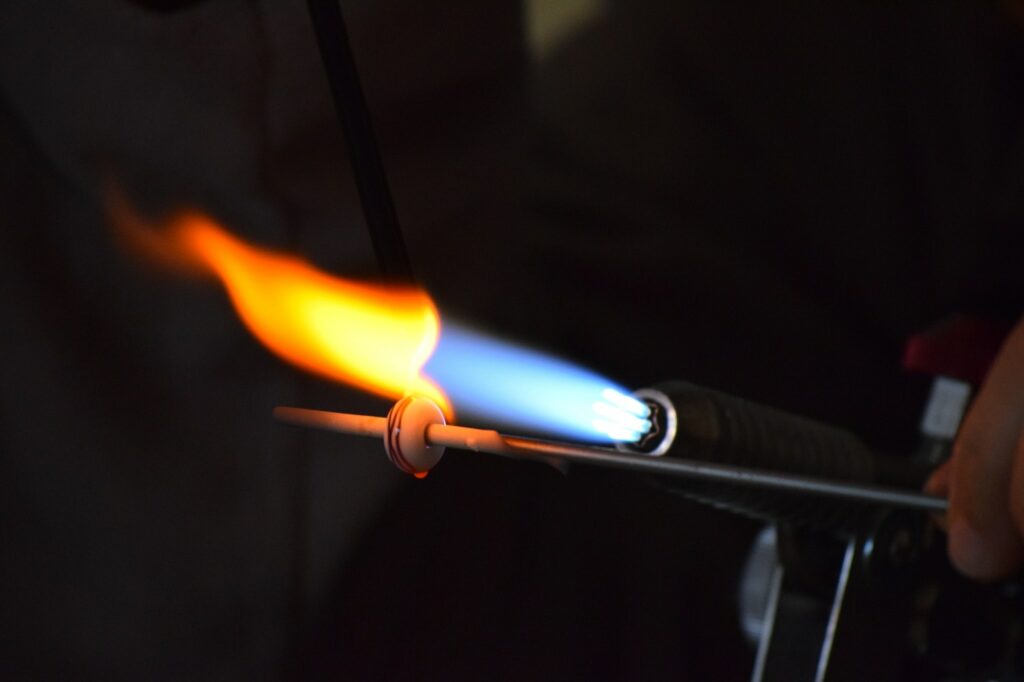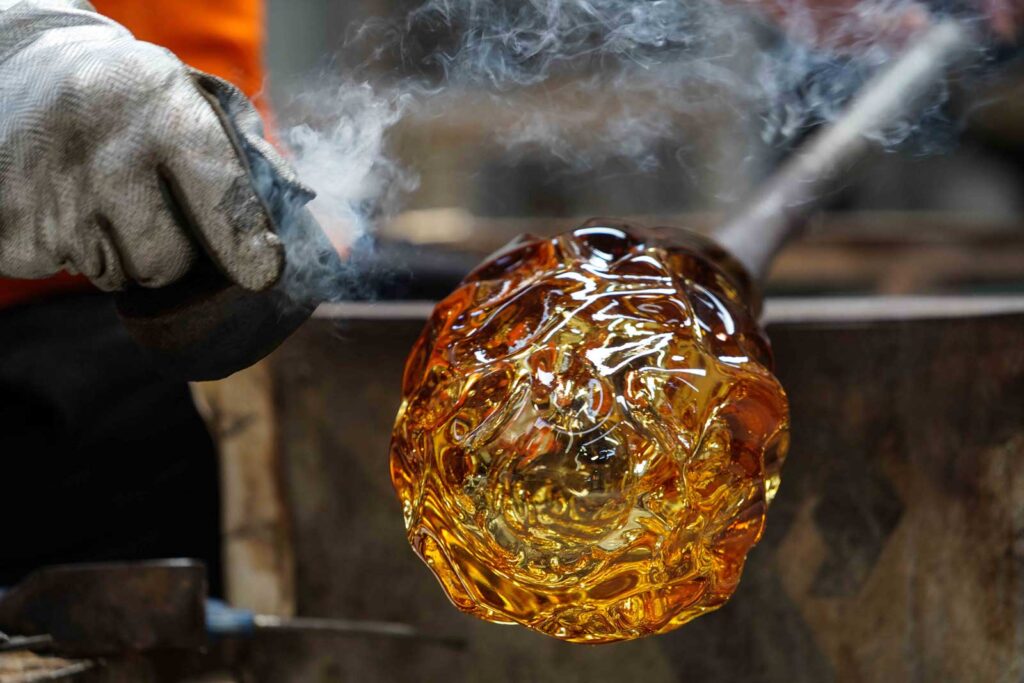You may have seen different types of glass art or vessels, have you ever wondered how the different shapes and finishes are created? Let us take you on a journey through the fascinating world of glass, exploring the different techniques used to create some of our pieces. From blown glass to cast glass, each method offers a unique approach to manipulating this delicate medium, resulting in unique works of art and/or functional glass.
Blown Glass
Blown glass is a technique that dates back to ancient times and continues to be utilised today. Using a blowpipe, skilled artisans shape molten glass by blowing air through the pipe, creating intricate forms and patterns. This method allows for the creation of delicate glass sculptures, vases, and intricate ornaments. Below, Roberto Beltrami, Founder and glass master of Wave, is working a large blown glass bubble in our factory.
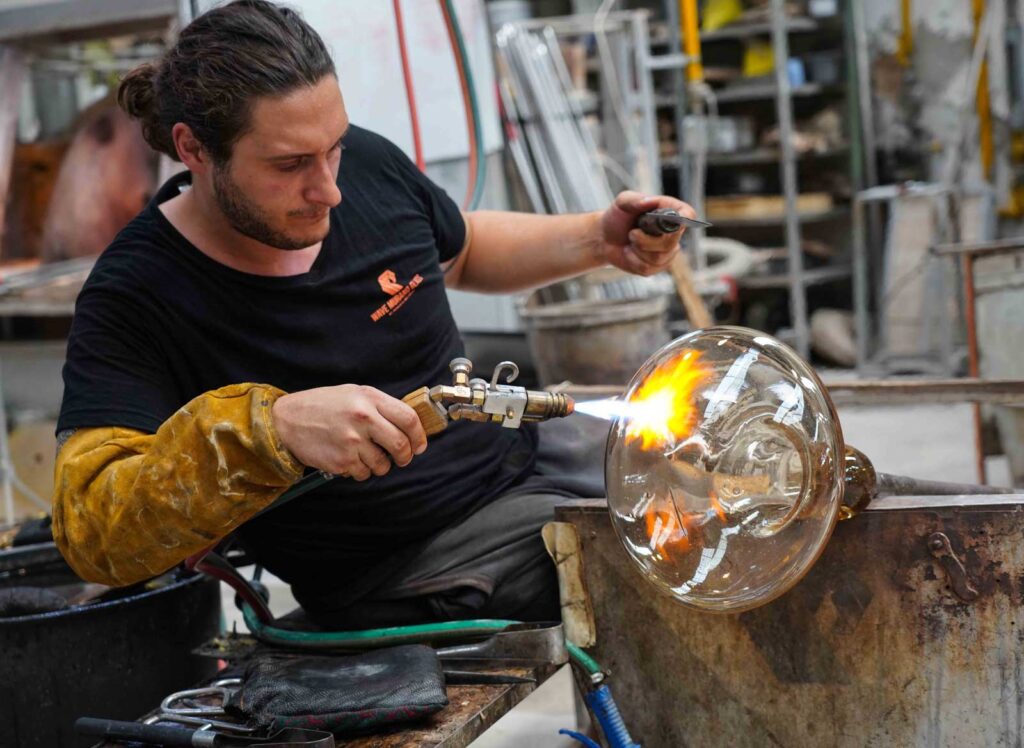
Tools for blowing glass
When blowing glass we use a combination of tools, including blocks and molds. Blocking is a process in glass blowing where you use a “block” to cool and shape the glass. Below you can see Olivia, one of the interns at Wave, using a block to shape the beginning of a piece. Blocks are made out of a block of fruit wood because of their low sap content and dense structure.
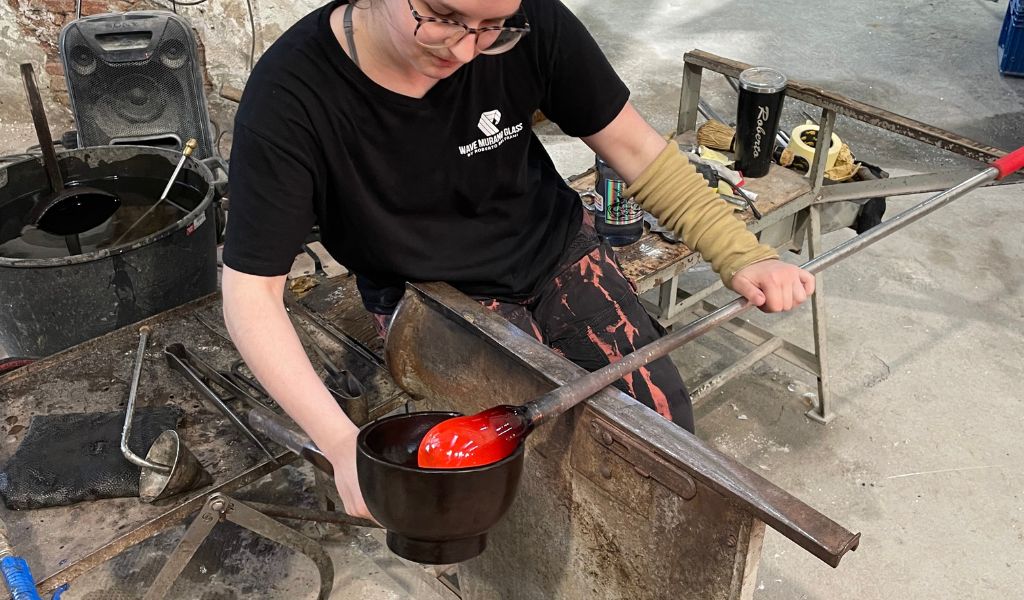
Blocks, as with wooden molds, are kept wet in a buckets of water.
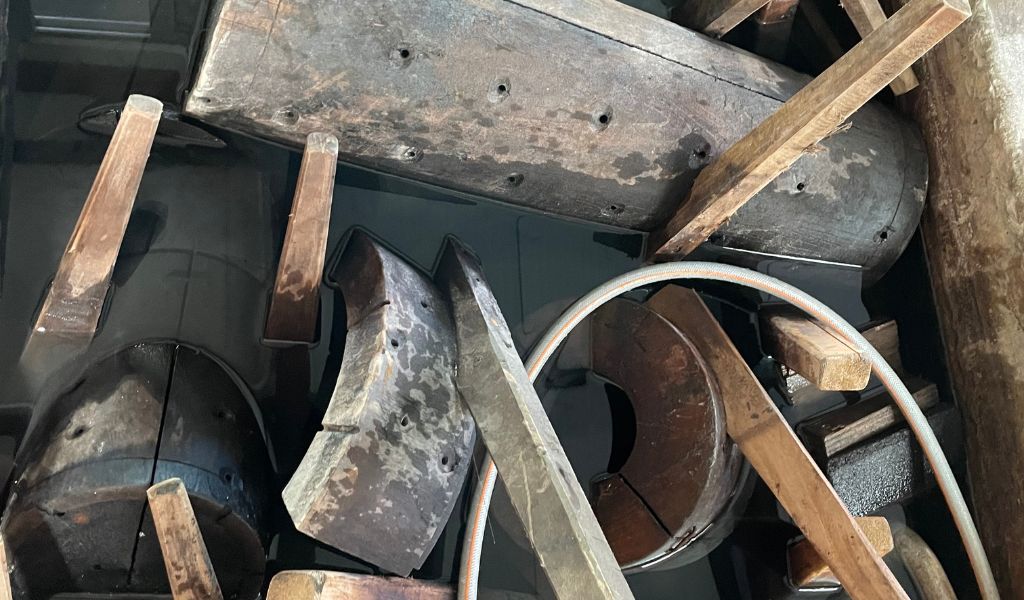
Above are some of our wooden molds, soaking in water. Using damp wood allows for steam to build, in turn assisting in smoothing the finish of the piece. When the prepared hot glass touches the wet wood, it forms a cushion of steam inside the mold. The glass then rides on the steam, producing a smooth finish and will not cause chill marks. Vents or holes (as seen in the image above) provide a release for the excess steam and greater control of the form.
Wood or iron?
We use a combination of wooden and iron molds in our glass blowing production. If we are making many items with the same mold, we opt to use iron molds as they will not wear.
Iron molds are most often heated before we blow hot glass into them. Iron molds can be either turning or still molds, meaning we either blow into them while also turning the piece (creating a similar effect with steam smoothing as per the wooden mold) or we blow into the mold without turning the glass. Below is an example of us heating a small, still, iron mold for a recent production.

Cast Glass
Cast glass is a technique that involves melting glass and pouring it into a mold, allowing it to take on the desired shape as it cools. This method offers endless possibilities for creating intricate designs and detailed textures. From solid sculptures to functional objects like bowls and plates, cast glass allows artists to explore the sculptural potential of the medium. Below is a new lighting product by Wave which we cast in our factory.
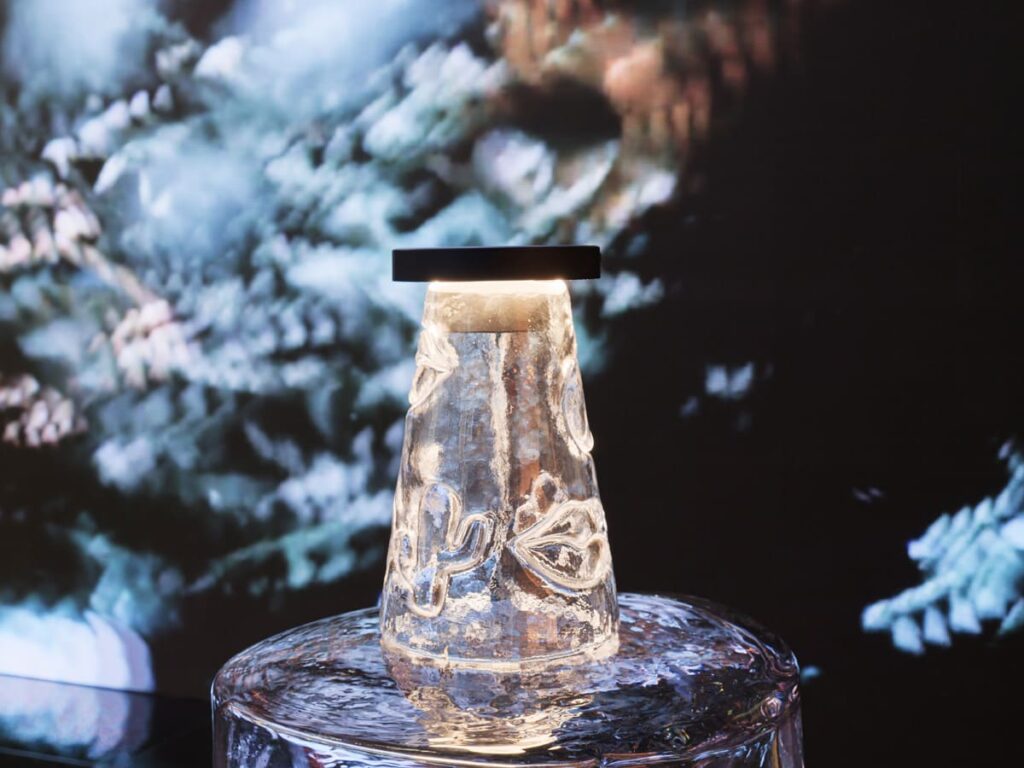
Fused Glass
Fused glass is a technique that involves melting multiple pieces of glass together in a kiln. Through this process, the glass pieces fuse together, creating a unified piece with vibrant colours and unique patterns. Fused glass art encompasses a wide range of forms, from intricate jewellery to decorative plates and wall hangings. The versatility of fused glass allows artists to experiment with different textures, layers, and techniques, resulting in truly one-of-a-kind pieces. Below you can see some fused panels we have created for some bespoke lighting in our shop. These were made using offcuts from our glass, giving a new life to the material.
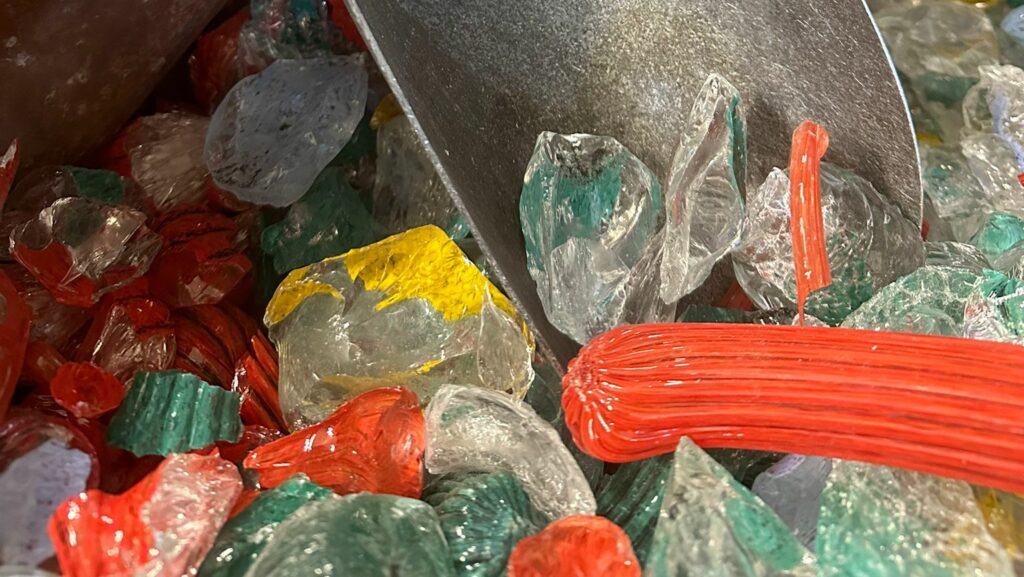

Stained Glass
Stained glass is a form of art that has adorned cathedrals, palaces, and homes for centuries. This technique involves cutting coloured glass into various shapes and assembling them using lead or copper strips, creating intricate designs and pictorial representations. Stained glass art truly comes alive when light passes through it, casting vibrant hues and patterns into the surrounding space. This is not a technique we utilise at Wave, but one which we think you should know about. Particularly when visiting Venice and Murano!
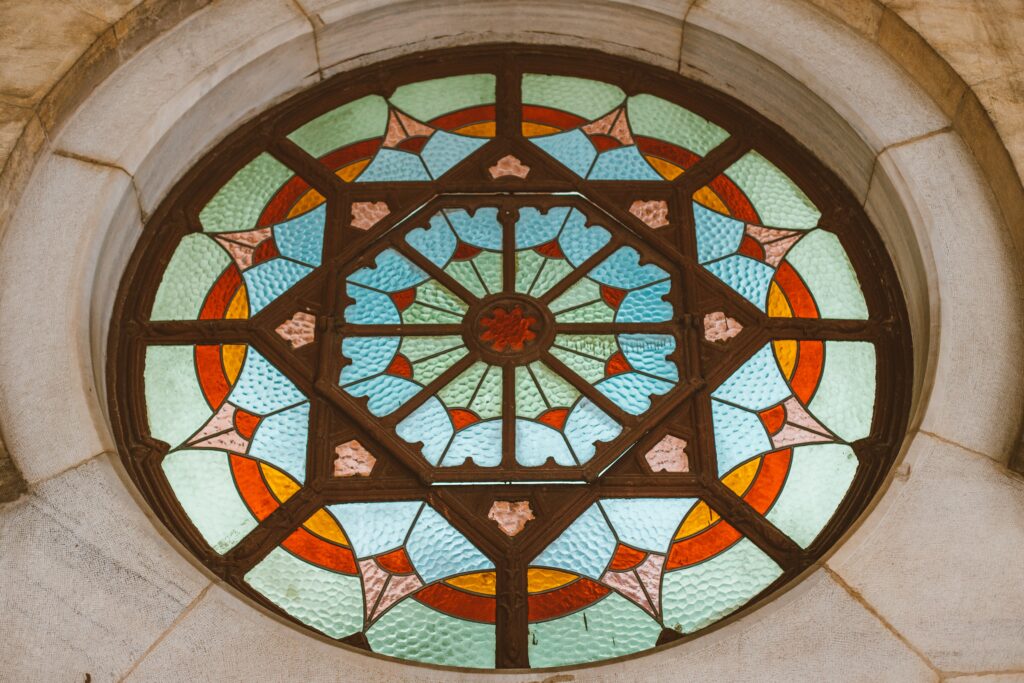
Flame Work
Flame work, also known as lampworking or torchwork, is a technique that involves manipulating glass rods and tubes using a flame torch. By heating the glass, artists can shape and mold it into intricate designs, such as glass beads, small figurines, and intricate jewellery. This technique is also used for marbles and some paperweights. While we do not use flame working in our factory, we can still create small intricate pieces with blown glass.
